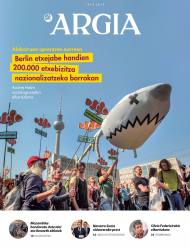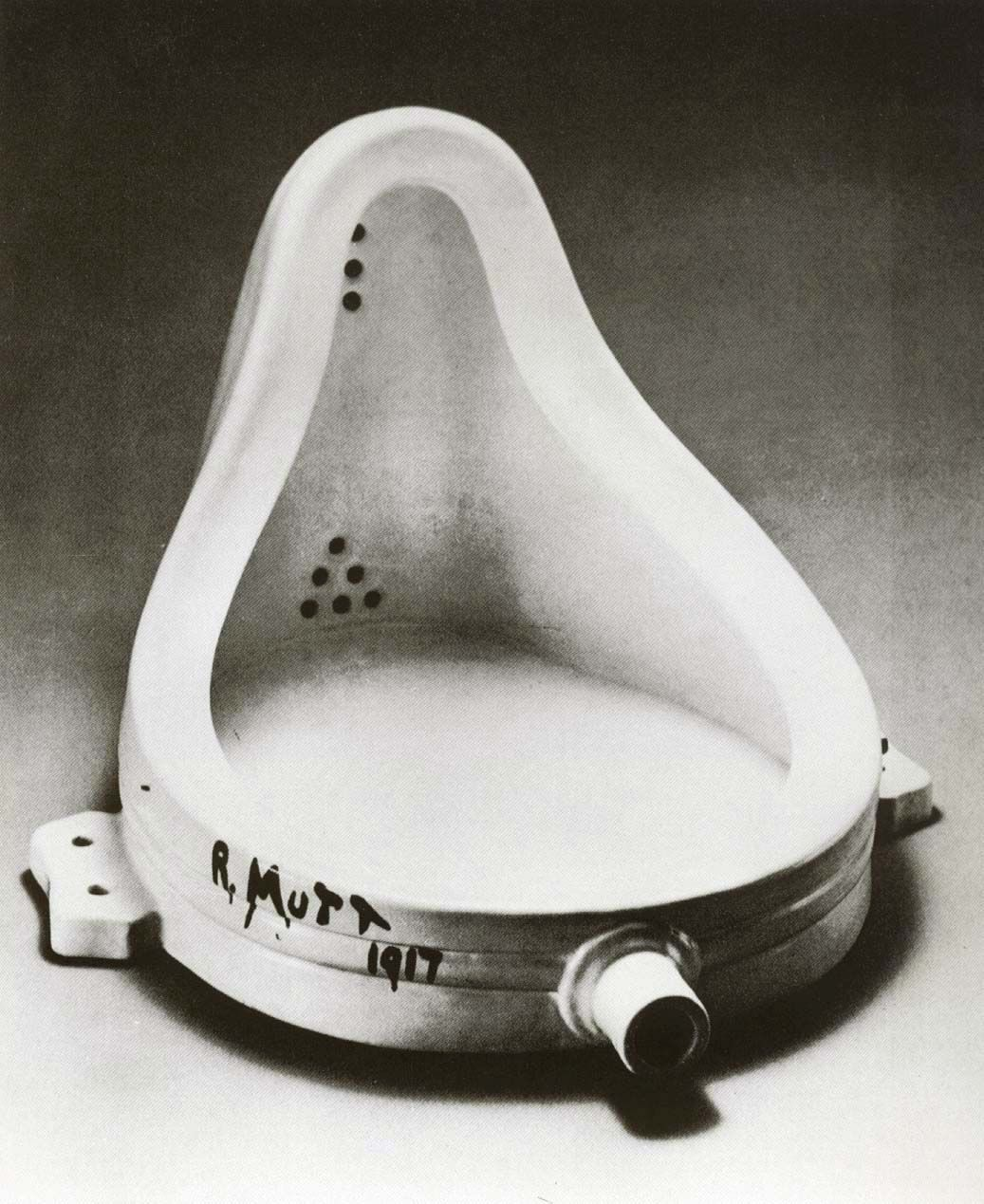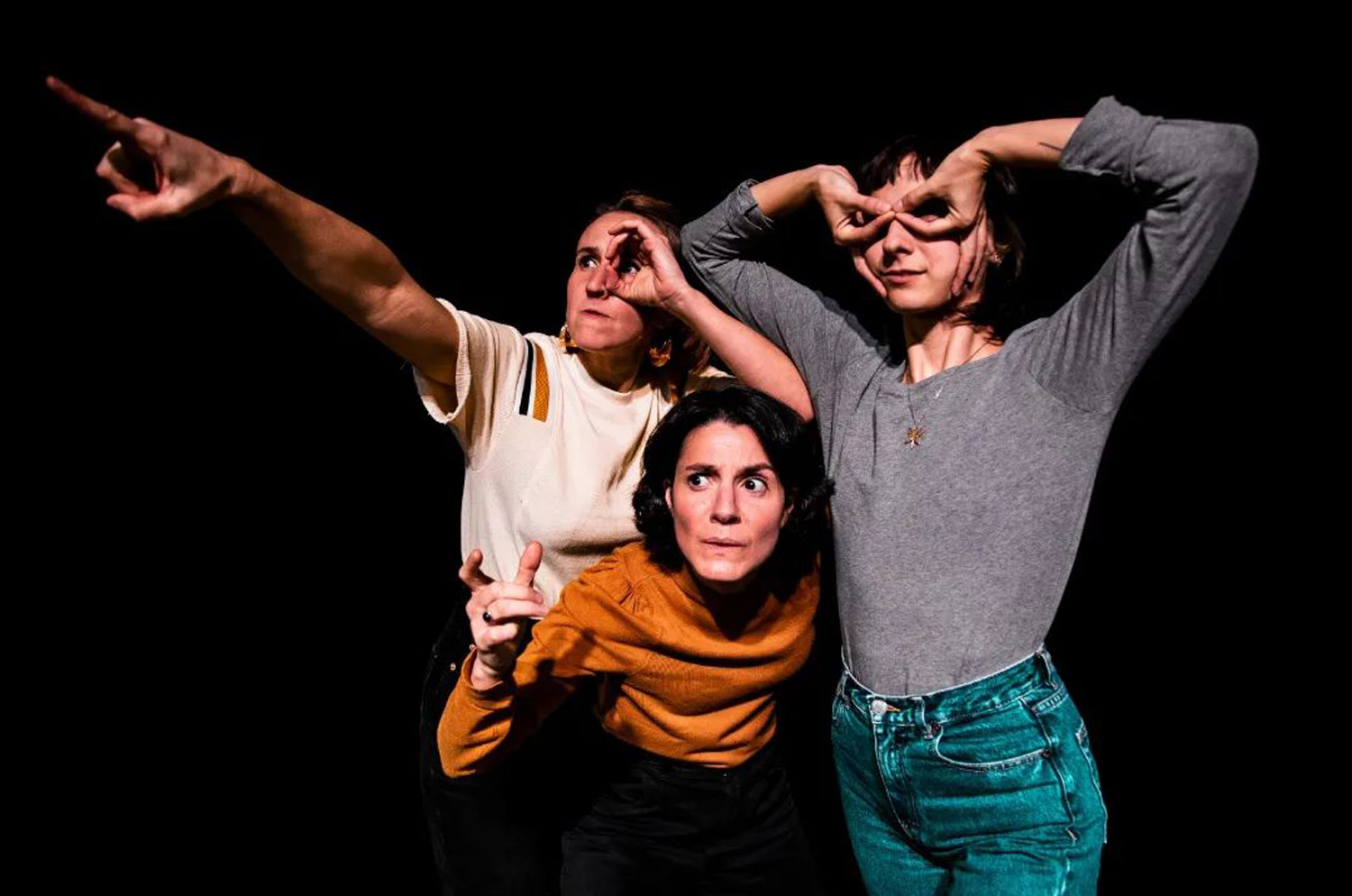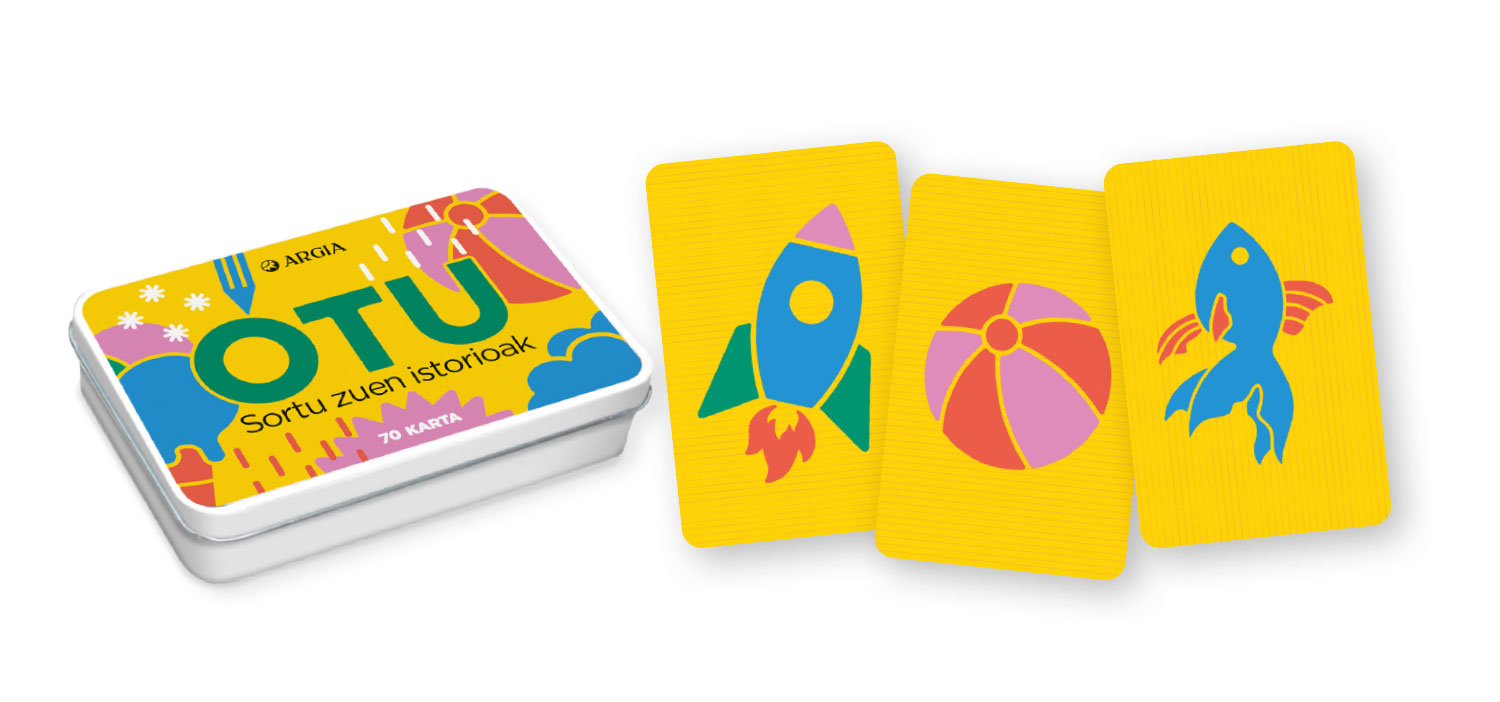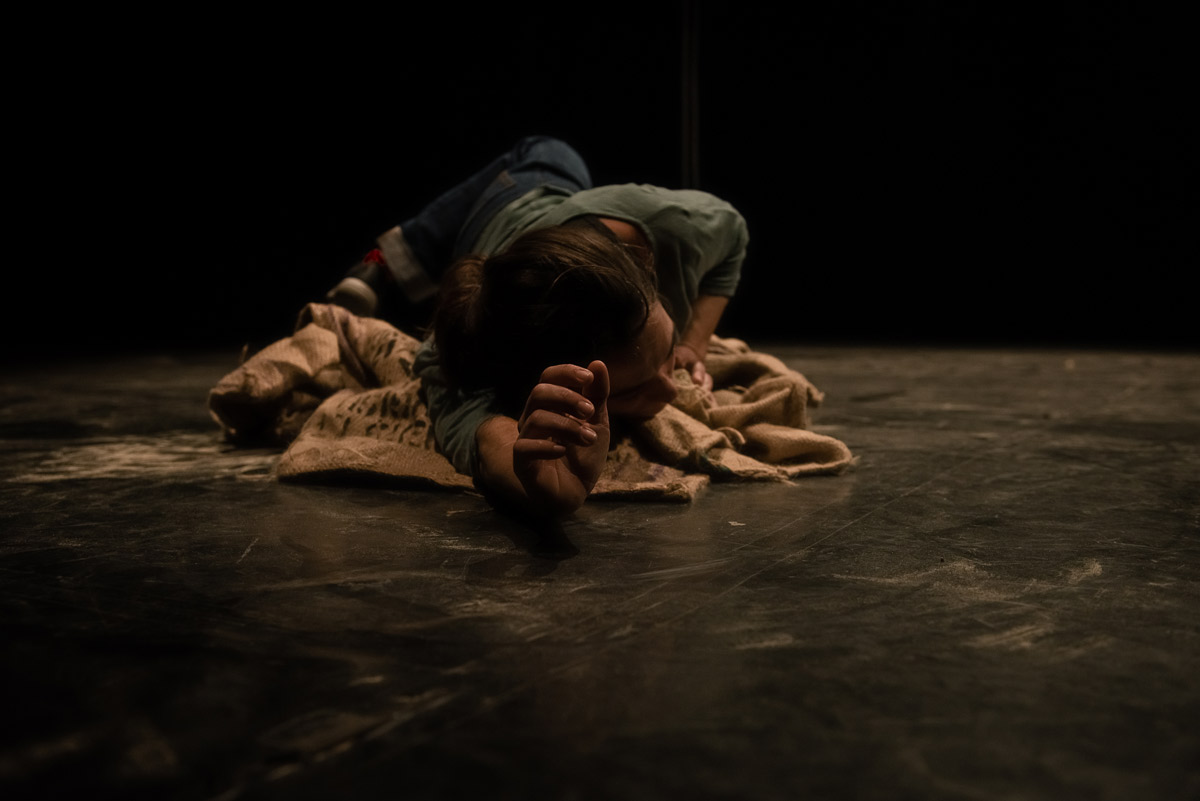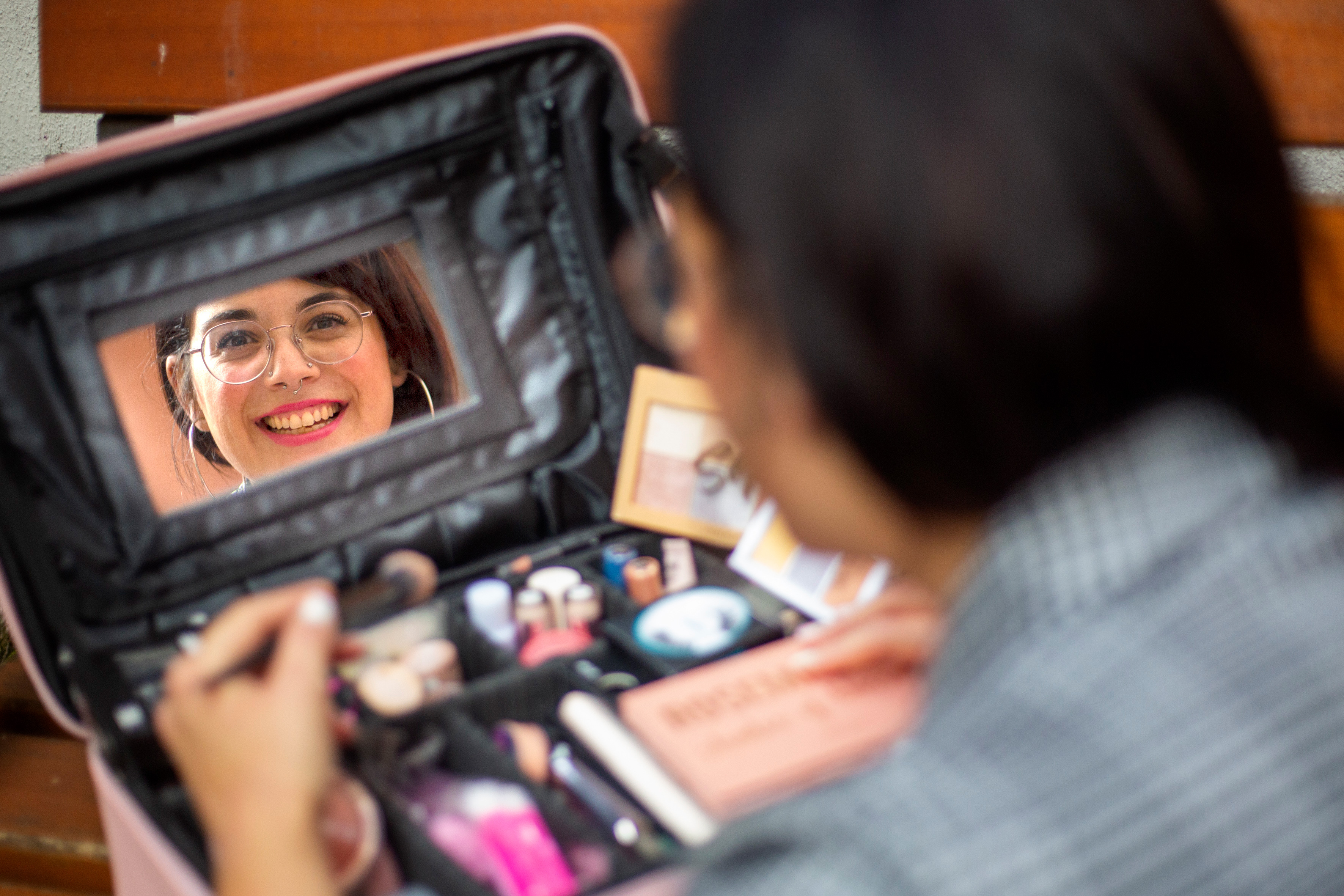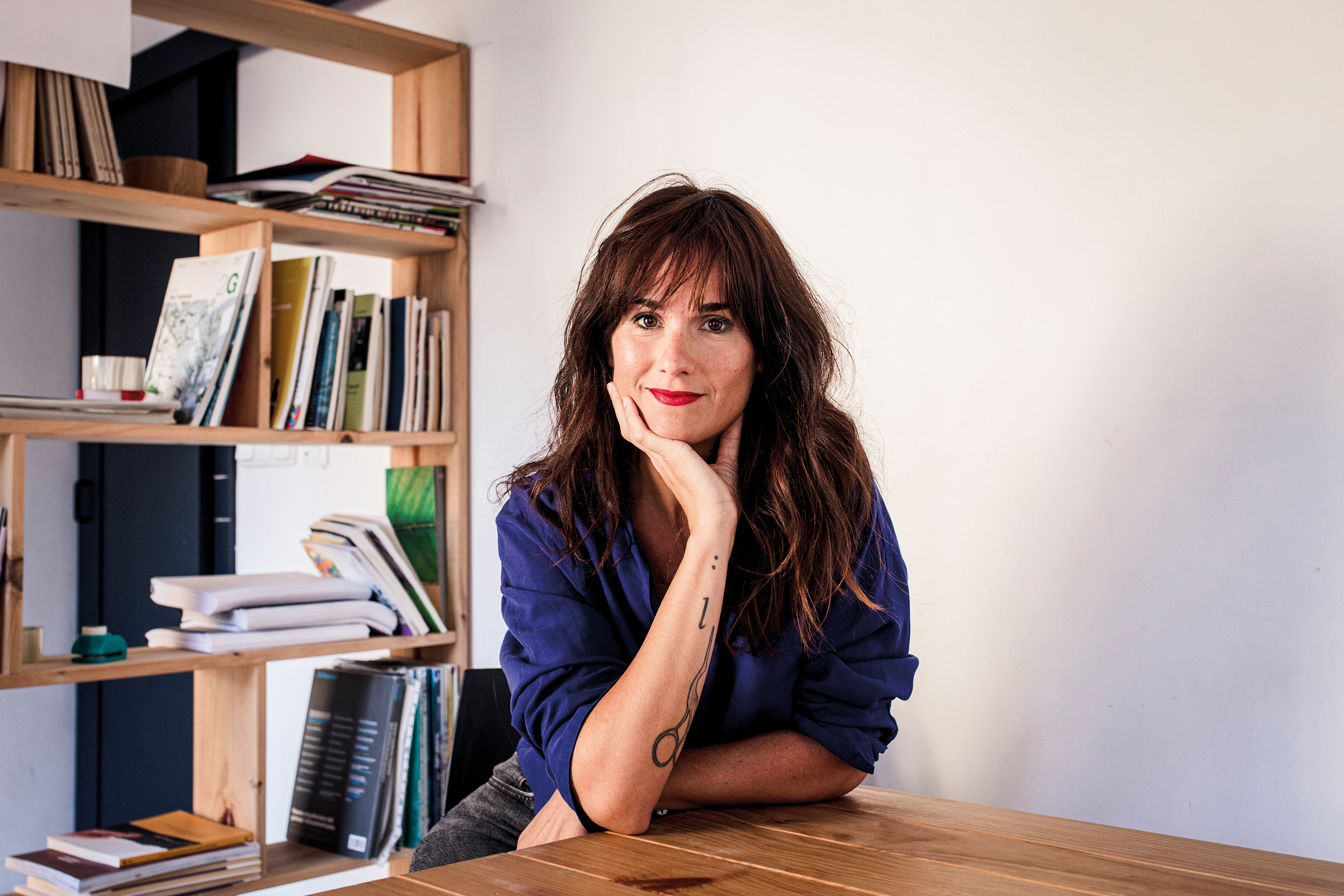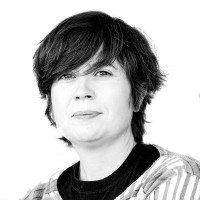"Drawing is a perfect tool to exercise any profession, but you don't work as a skill."
- The illustrator Ainara Azpiazu Aduriz welcomes us in Hernani, in the second issue of Andrekale. In that house Axpi grew, and there he now has his place. This street has a nice history: officially it was called Kardaberaz, but five years ago it recovered the name that has traditionally been given on the initiative of the citizens. It's certainly a good place for today's interview. And it is that one of the axes of Axpi’s work is to bring color to those who have been left out of the imagination (women, elderly, children).
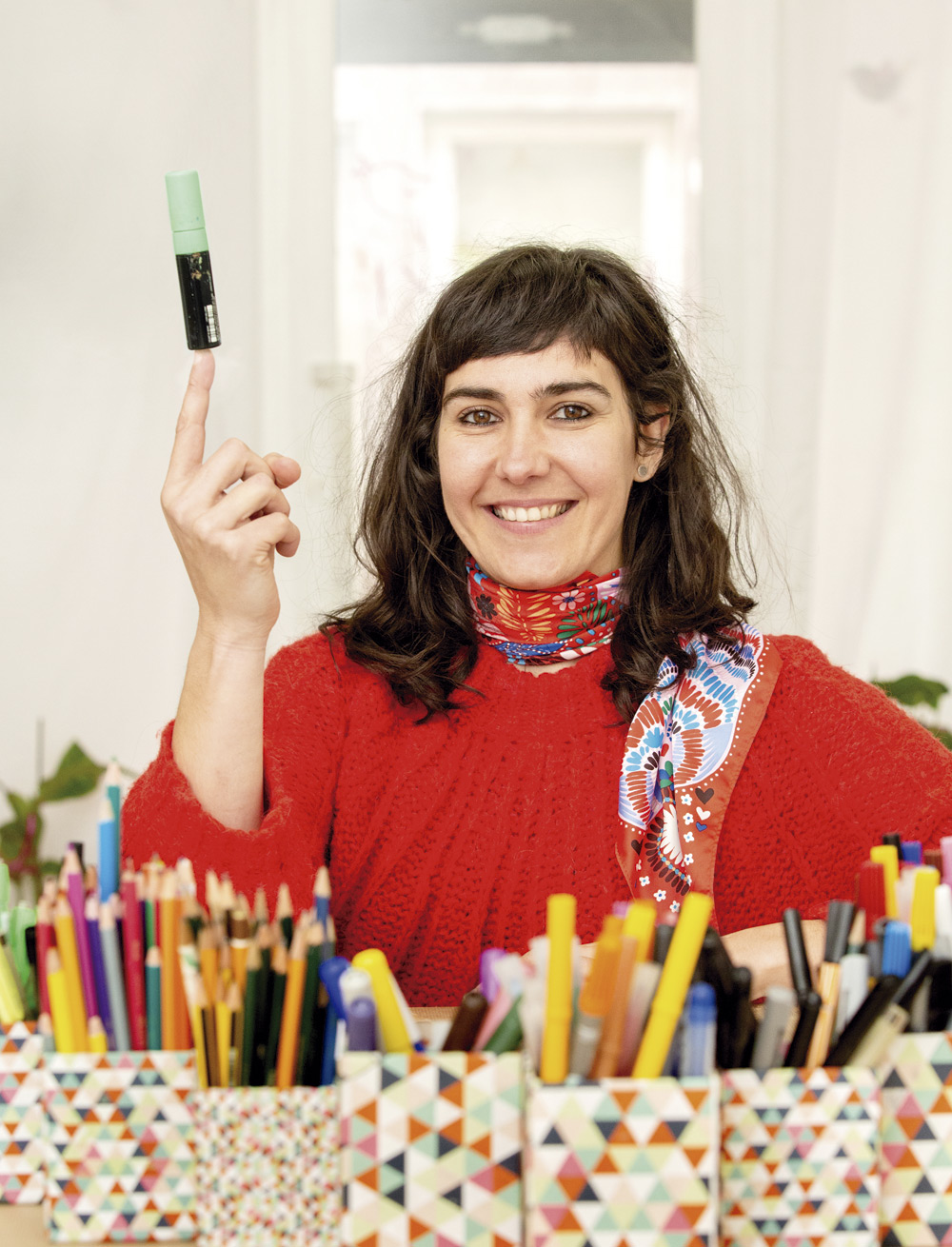
Soziologia eta Arte Ederrak ikasi zituen Bilbon, eta ilustrazioko master bat egin zuen Italian. Ilustratzaile dabil azken hamar urteotan, hainbat lanetan: komiki-tirak, liburuak, tailerrak eta muralak egiten ditu. Autonomoa da, baina, gaur egun, Kabiene elkarlan gunean dabil, Usurbilen. 2017an Etxepare saria eskuratu zuen, Paula Estévezekin batera egindako Arraroa lanari esker. Tupust! kolektiboko kidea da, eta Txalapartak berriki kaleratu duen izen bereko komiki-liburuan parte hartu du. Haren lanetako batzuk ikusgai daude Donostiako Lugaritz kultur etxean, ekainaren 14ra bitarte.
Ten years ago, when you converted the hobby into a trade, how did it happen?
Since I was a kid, I really liked to draw, like many other kids, and I never left. Her mother worked in an elegant shop in San Sebastian, in Nerecán, where many offices and art supplies were sold. I was bringing gifts from there, he was also very fond of art, and from time to time, in my childhood, I developed my hobby for the gifts that I had brought from the store with mime. It was time to decide what to do and where to go, and at home they didn't have the opportunity to welcome the opportunity with very good eyes until I decided to do sociology. I ended up with some pretty good grades, I got a sociologist job, and I did some tests. So I realized that that view that sociology gave me and that key to analyzing reality I really liked, but it wasn't the trade I wanted to be, or at least I didn't want to stay a bit without following the path of fine arts that I had left pending, because I was still young. We have to spend eight hours on something we like. Sociology gave me a look, and the way fine arts made it appear.
But I don't even satisfy you in the fine arts.
The first years were very dispersed, it was tested here and there, and I already had things quite clear, I didn’t want to “lose” any more time. Working and studying at the same time required a great deal of effort. What I needed was to go deeper into the technique to keep doing what I wanted: communicating with the world. But in fine arts, I didn't see many occasions of doing so. What is more, I would say that this mode was very undervalued. The comic book, the illustration, the realization of figurative objects … was not what was encouraged. I found my way in the Enlightenment, first doing courses and then in the master's, in Italy.
You say you wanted to communicate, but what?
For example, I didn’t see women’s images in socially relevant places, where there are usually images: press strips, magazines… It seemed like talking about the world of men was talking about the world. It was true. The world seemed to be that, but it was a small fraction of the world. It lacked not only women, but also the elderly, children and so on.
It does various works. Let's start with illustrated books. What is this area like?
Very little is produced in the Basque Country, because it is not cheap to produce. Translations do, many are made, and beautiful. I would say that local production is in its early stages, there are some publishers that, fortunately, bet more, and I think it's growing. On the other hand, compared to other countries, in the Basque Country we have no culture of the image, nothing. The image is still linked to the children's world, and the children's world is related to the lowest value. Being tied to the world of children is not bad in itself, it is wonderful, it gives me a lot: the freedom of children, the breadth of ideas… they are wonderful. We seem to be different children and adults, but after all, it is the same person, after development. I don't know why we despise these things. We also have a way to go.
"Many of the metaphors and lessons from the life process in my house were given through animals or plants."
What is the charm of these books for you?
I think they have a great ability to reach people, because they have wonderful images and the game between text and image is usually very nice. They leave a certain feeling, they are often very deep and correct. It is a different way of collecting content through the book and offers another kind of experience that I find very nice. As a creator, it's a candy.
You mentioned the game between text and image. How do you need it?
The creator decides how it can be. What is clear is that it does not have to be repetitive, that the image does not have to repeat what the text says, or that the image expresses what the text says. From there, different relationships can emerge. On the one hand, a contradiction can be created between the two that gives rise to interest. Or, if you don't, you can spread the story through the image, creating secondary stories, for example. I am interested in those who create a game between texts and images, which create complicity with the reader.
I have heard you say that you want to do both things, the text and the image.
Now I start. Both of them seem important to me. I really like to illustrate what is created in someone else's head, because I've realized that you create things that wouldn't happen to me, and that's very enriching. Making my texts and working with another, the body asks me both.

How does this collaboration work?
It depends a lot on the person. I think Arraroa worked well because the conversation took place before we started writing and drawing.
Paula [Estévez] and you both decided the story before you started working.
An album, after all, talks about something in two languages, creating something more complete. So we two agreed on the subject, how we would approach it and where we were going to do it. Then one will make the text and the other the image, but the base is decided. It also seems to me that in this way the illustrator and the writer are much more satisfied.
Is that normally the process?
Normally, the first is usually the text. You get the text and there you have to look for how to complete the book through images. You, so to speak, follow it. This, sometimes, doesn't make things very easy for the illustrator's work. So it's the writer who decides the subject, and every now and then I started to feel like deciding the subject, so I started writing my texts.
You also build murals. Here together is a big one, behind the fronton of Hernani. Don't you want him?
Yes. I'm from here, from Andrekal, and my brother and I, as a little boy, were going a lot there to play handball when we would get bored. This house has been the house of the family and many relatives have lived here, and in Tiloseta [Paseo de Ezkiaga] I have also lived a lot in my youth. It has a symbolic burden because it is Hernani, because the Tilos are there, because I can still imagine walking my grandparents and friends, because there is a pelotari woman on the wall… For me all these things are very important.
You did it all, going up to a big crane.
It was a total adventure, a small big odyssey. The process itself was very nice, I had a lot of people, I talked to a lot of people that I hadn't talked to long ago, and they generally liked the mural a lot.
You did it with a scholarship, right?
I mean, it was Hernani's first street art scholarship. The call was very open. You had to submit a project, the discipline was not fully defined, but the maximum amount you could ask for. The wall was very dark, full of moss and moulds… It was actually a place that looked like a corner. I asked the City Hall to fix the wall, the remaining cranes, and put them in the project costs. And the City Hall approves it! I am very grateful.

What do you like about murals?
They're on the street. People go down the street and go. You have to go to the bookstore to open a book, buy the book and have time to read it. In the Museum you have to go in and look. On the street, there it is, it seems to me an important thing of the mural. It gives me more and more respect, because as the years go by, I've realized that it has to work with all the elements on the street. I think we have to look for harmonies, we have to respect the place where the mural is. It seems to me that it has to be in touch with that place that is there. It's not a book, you close the book and there it ends, mural no.
Comics, there's another axis of your work. All of a sudden! You are part of the collective and have recently taken the collection of comics of the same name. You've created a story called smell. You've also taken things you often use: nature, animals, bonding with ancestors, community, fraternity…
Nature's comes from my home. My grandfather was a hunter, my uncles too, my father, my brother ... Some of you will see hunting with bad eyes, and I understand that. I have also had a lot of contradictions and struggles for years, and it still doesn't make me easy, I haven't eaten a hunter for many years. Imagine I was also a vegetarian. I was invaded by guilt. However, there is another aspect, that of nature very intimate and well understood. I have reflected a lot, discussed and suffered with my family on this issue, but it has also left a good mark on me. In my house there has been a great sense to look at time and to know what environment he is going to do, almost like a peasant. When we were young, we spent hours fishing in the river. I have first of all met many animals: badgers, wild boars, wild goats, sheep, foxes… At one time our relations were not limited to human beings, they were related to plants, to animals, with time… Today, in this understanding of the world, it seems that we are separated, there has been a certain rupture, but at home we have never experienced the rupture. In my house, many of the metaphors and lessons from the life process were given through animals or plants. In addition, if you look for examples, there is everything, for example, the sea bream is a hermaphrodite. I like that, in nature there is not a single model, but a thousand shapes and colors.
You live now in Igeldo.
I've been looking for closeness to nature, I need it. If I don't, I feel lost. We, despite being on the street, were very aware of nature, especially this valley, from here to Goizueta. What interests me is what holds people who have lived in contact with nature for generations, the ability to read nature. We had a great culture before, health and the possibility of understanding ourselves in another way, we were looking away. Now we seem to be immersed in anthropocentrism, but sometimes we're like hamsters, on the wheel, and we don't know how to find the solution. I turn to these cultures for inspiration. The Inquisition, for example, seems to me to be a very important fact because it brought about very important changes in society, because it was a very great barbarity, and because it spread the roots that I mentioned. This resulted in a huge loss.
You also teach drawing and comic classes. What do you think of the situation of artistic education?
The subject may be for another conversation, but in short, I would say that the visual and plastic arts don't have a dignified place in the résumé, and they're relegated and despised. Drawing, for example, is a perfect tool to exercise any profession, but you don't work as a skill. This creates huge gaps.
Many think that drawing is a gift, as was the case with the first bertsolaris, it was thought that bertsolari was born, that he had the natural gift. It seems to me that drawing makes a similar reading, you have a special ability, or you don't have it, and it's already. That is not the case, far from it. There are techniques, tricks, concrete steps that let anyone learn to draw once it's known. Anyone. In much less time than is believed, the bases can be very well assimilated. I think it is necessary for the educational programme to take this into account.
Children have, and some adults have not lost the tendency to creation. Perhaps all of us who tend to immerse ourselves in creation will not do nice jobs, but I think the experience is similar: when you are there you can put aside many things to have a good life in this world:... [+]
Emakume sortzaileak biltzen dituen Dinagu kolektiboak azoka antolatu du martxoaren 12an, Aiaraldeko Faktorian (Laudio). Emakume sortzaileen lana bisibilizatzea eta sortzaileen beharretara egokitzen diren ekimenak sortzea helburu, “herriz herri sortzaileak batuko dituen... [+]
“Barraka” abentura bideo-joko umoretsua garatzeko urtebete izango du Ibai Aizpurua diseinatzaile eta programatzaile irundarrak. Horretarako 15.000 euroko laguntza irabazi du Durangoko Azokaren laugarren sormen bekan.
Dinagu Emakume Sortzaileen Kolektiboa Donostiako Egia auzoan, Teila Fabrikan, izango da abenduaren 18an eta 19an. Kolektiboa emakume sortzaileen lanei ikusgaitasuna emateko sortu zen duela hiru urte.









